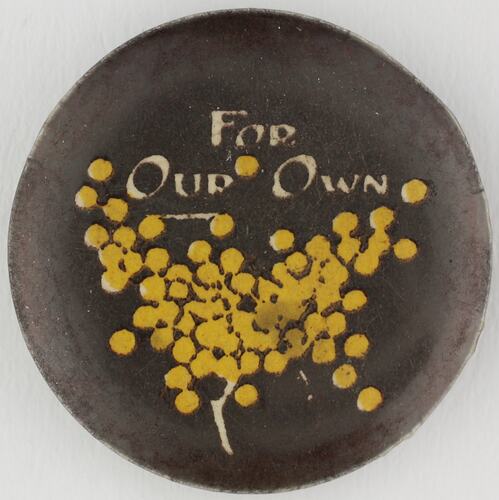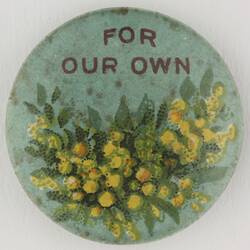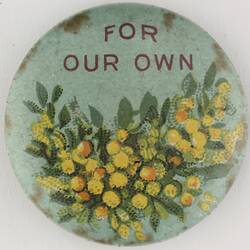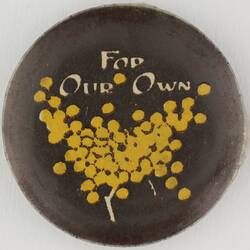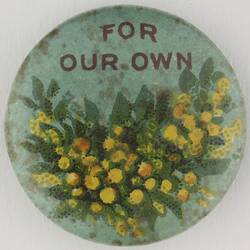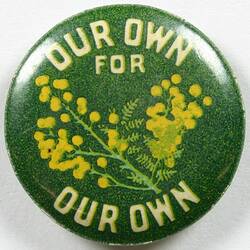Summary
Alternative Name(s): Pin, Button
Fundraising badge with stylised wattle motif, possibly dating from World War I.
The first 'national' Wattle Day was celebrated in Sydney, Melbourne and Adelaide on 1 September 1910. Wattle had become a symbol of Australia with the approach of Federation. It was particularly promoted by the Australian Natives' Association, established in Melbourne in 1871 as a non-partisan and non-sectarian friendly society for Australian-born, white men seeking to shape Australia's nationhood and identity. The ANA was a strong advocate for Federation and became an advocate for White Australia. It was a staunch supporter of trade protection and immigration restriction, and Prime Minister Alfred Deakin was a member. Public support for Wattle Day peaked during World War I, when it was a potent symbol of home for military personnel serving overseas, and a means of raising money for organisations such as the Red Cross. Beautifully designed Wattle Day badges as well as wattle sprigs were sold. The influence of Wattle Day waned as the 20th century progressed, but in 1992 the Governor-General declared 1 September National Wattle Day.
While this example does not specifically reference Wattle Day in its inscription, the inclusion of wattle in the design makes it likely to be an example of a Wattle Day fundraising badge. The words 'For Our Own' suggests that this badge was sold to raise money specifically for the troops.
Physical Description
Round metal badge with brown background and sprig of yellow flowers/blossoms, possibly wattle in centre. Words printed underneath and on rim. Metal pin in back fits in slot.
More Information
-
Collecting Areas
-
Acquisition Information
Donation from Mr H. Legge, 14 Feb 1989
-
Place & Date Created
-
Inscriptions
"FOR / OUR OWN ". On lower outer rim: "COPYRIGHT".
-
Classification
-
Category
-
Discipline
-
Type of item
-
overall dimensions
3 mm (Height), 22 mm (Outside Diameter)
-
References
'About Wattle Day,' Wattle Day Association, [Link 1]
-
Keywords
World War I, 1914-1918, World War I Fundraising, Badges, Wattle Day
